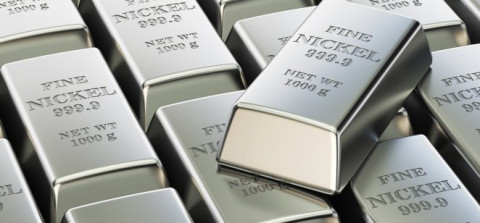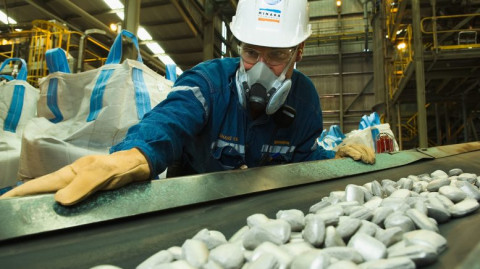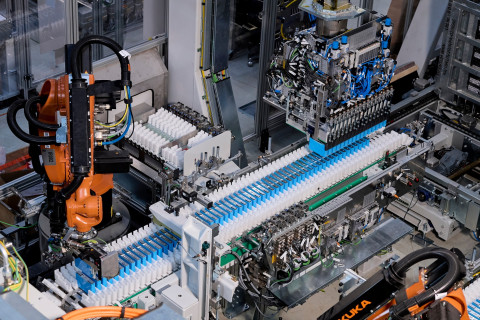Russia-Ukraine conflict exposes risks in EV supply chains
This article gives you a glance at the scale and ramifications of recent disruptions in the global supply chains of EVs, battery metals in particular. The current crisis has highlighted the risks of the industry's dependence on Russian nickel for battery manufacturing, but the larger supply chain crisis is much deeper than we think.
The Russian invasion of Ukraine which emerged as a humanitarian and geopolitical crisis in the European region is also creating inevitable threats to the global supply chains of the automotive industry, e-mobility in particular. As is the case with every other industry in the 21st century, the value chains of electric vehicles and their batteries are inherently global and interconnected, thus making the larger ramifications of the conflict felt on the trading and logistics of key supplies.
What makes the present crisis worse is that the supply chains of EV and battery metals were already in a fragile state, thanks to the Covid-19 pandemic, and the unavailability of semi-conductors meant for automotive use, slowing recovery only in the last couple of months. The vehicle and parts manufacturing of both domestic and international companies in both the countries has almost stopped, as many automakers and suppliers have stopped operations in Russia as a result of economic sanctions, import-export bans, and voluntary corporate retreat due to war.
As if this wasn't enough to rattle the EV value chain, the war's impacts on the upstream supply chain of critical minerals essential for the manufacturing of batteries and semiconductors is yet another blow to the industry. The shocking news of nickel prices hitting a whopping $100,000 per ton to stall the London Metal Exchange (LME) last month, exposed the magnitude of the risks plaguing the supply chain in the current scenario.
The current crisis has also spotlit certain structural problems associated with the dependence and sourcing of such scarce minerals like nickel or lithium, which are like 'disruptions waiting to happen even if the Russia-Ukraine conflict had not surfaced, clearly exposing the lack of reliability and sustainability in the way the global EV supply chain functions. If left unaddressed, the volatility in the supply chain can seriously hamper the ambitious EV production targets of automakers in the short-run and e-mobility plans of nations in the decades to come.
Nickel pricing fiasco
Nickel is a critical ingredient of lithium-ion batteries meant for EVs, as its combination in the battery chemistry ensures higher energy density that allows EVs to exhibit extended driving range. Unlike the Chinese and Asian EV markets that demand affordable Li-ion batteries with iron-phosphate (LFP) chemistries, the European and North American consumers prioritize longer range over price, thus the present nickel crisis has relatively hit harder the supply chains of those markets, and Western EV makers in general.
Since the aforementioned London Metal Exchange (LME) episode last month, trading in nickel subsequently resumed, yet the prices are about 50 percent higher than that of last year. Prices of other materials like aluminum, steel, palladium, and neon gas – among many others – have also increased substantially. According to the price-tracking of a basket of EV battery metals by Barron - an American financial news agency - the prices have gone up 64 percent so far post the Russian invasion, which can theoretically push the selling price of an EV by as much as $2,000!
Russia is attributed to about 11 percent of the world's nickel ore supply, and over 20 percent of high-grade Class 1 nickel that goes into premium EVs. The country also produces over 45 percent of the world's palladium, a rare-earth mineral used for making semiconductors and catalytic convertors for ICE vehicles, along with a fair share of global exports in steel and aluminum as well. Ukraine, on the other hand, produces almost all neon gas, which finds its necessity in laser systems that support the manufacturing of circuits and semiconductors. The war-torn country also exports wiring harnesses and other smaller parts for the automotive industry in Europe.
'Price' of the crisis
Metal shortages and high prices are impacting the ability of automakers to ramp up their present EV volumes and shift their existing ICE portfolio into electric, as the latter requires more semiconductors and batteries than conventional vehicles. The disruptive scenario is also ill-timed, as the global demand for EVs are significantly increasing in the last couple of years, with 2022 previous expected to make huge milestones in terms of EV sales.
Further, the supply chain imbalances may lead to longer production and vehicle delivery of EV start-ups, whose importance in driving the e-mobility cause in Western markets cannot be understated. Also, with rising fuel prices and costs of ICE vehicles due to the Russian conflict, consumers are more and more inclined to switch to EVs given reliable and affordable products. But the EV industry may not be in the right shape to tap the advantage.
However, it is to be noted that nickel is neither a scarce metal as lithium, nor its market is entirely driven by the demand for the battery industry, which accounts for just about 5-8 percent according to McKinsey's 2020 report. Stainless steel manufacturing consumes about two-thirds of all nickel production, which may have only indirect impacts on the price inflation of EV supplies. But the catch here is that, since stainless steel finds demand in many other industries like construction or defence, the demand-driven price volatility is likely to be a constant and may even exacerbate due to spiraling effects.
Reducing Russian dependence
Hence, the focus is already on alternative sources to nickel to reduce the dependence on Russia. Indonesia, for instance, is the biggest producer of nickel with over a third of global reserves in its soil, yet its output is largely the inferior Class 2 nickel largely meant for exports to Chinese stainless-steel manufacturing. The lack of adequate reserves of Sulphur ores is a barrier for the country to producing high-quality Class 1 nickel but is already working on finding a way around it in this regard.
Indonesia is working on about seven projects where its limonite reserves can be converted into mixed hydroxide precipitate (MHP), using a process called 'High-Pressure Acid Leach' (HPAL), which can be refined further into Class 1 nickel. But then, it would be unrealistically optimistic to say that the country can emerge as an immediate replacement for Russian supply for the battery industry.
On the other hand, automakers are also considering battery chemistries that don't require much nickel. Tesla has recently switched to LFP batteries for its standard-range 'Model 3' made in China, and a similar move is shortly expected in all of its standard-range variants. Dominated by China, the LFP batteries are touted as cost-effective and better than other chemistries in terms of fast-charging capabilities and safety profile.
At the same time, General Motors is engaging the Canadian recycling firm Li-Cycle to come up with effective processes to recycle valuable battery metals including nickel, cobalt, lithium, manganese, copper, graphite, and so on. The company is confident that over 95 percent of the extracted metals can be reused in battery manufacturing or even for other industries.
Way forward
The coping strategies undertaken for the Russian conflict-driven EV supply chain disruption are not limited to the industry players only. Governments are also making active efforts to secure reliable sources for a greener transportation future. Last year, the US came up with a strategic roadmap for e-mobility, which paid attention to the elimination of nickel and cobalt in Li-ion batteries in the coming years. Immediately after the start of the Ukrainian crisis, the US and 30 other member nations of the International Energy Agency (IEA) floated a critical minerals security program. It is reported that the program will eventually lead to stockpiling of essential metals needed for EVs and energy applications. European Union's regulatory framework on the batteries supply chain is also expected to undergo massive changes in the coming months.
Going forward, multiple volatilities – independent-yet-interconnected – in the markets for critical battery metals are likely to continue as persistent risks for the years to come. Nickel has got the limelight due to the Russia-Ukraine war, but we have to remember that the supply chains of other metals such as lithium and cobalt have always been problematic, given their mining and trading chains are rampant with environmental and human rights abuses, especially in poor and underdeveloped nations. Unless and until the global EV and battery industries find relative peace with these crises concerning their mineral sourcing, they can hardly usher in a truly greener and sustainable future for human societies.


























